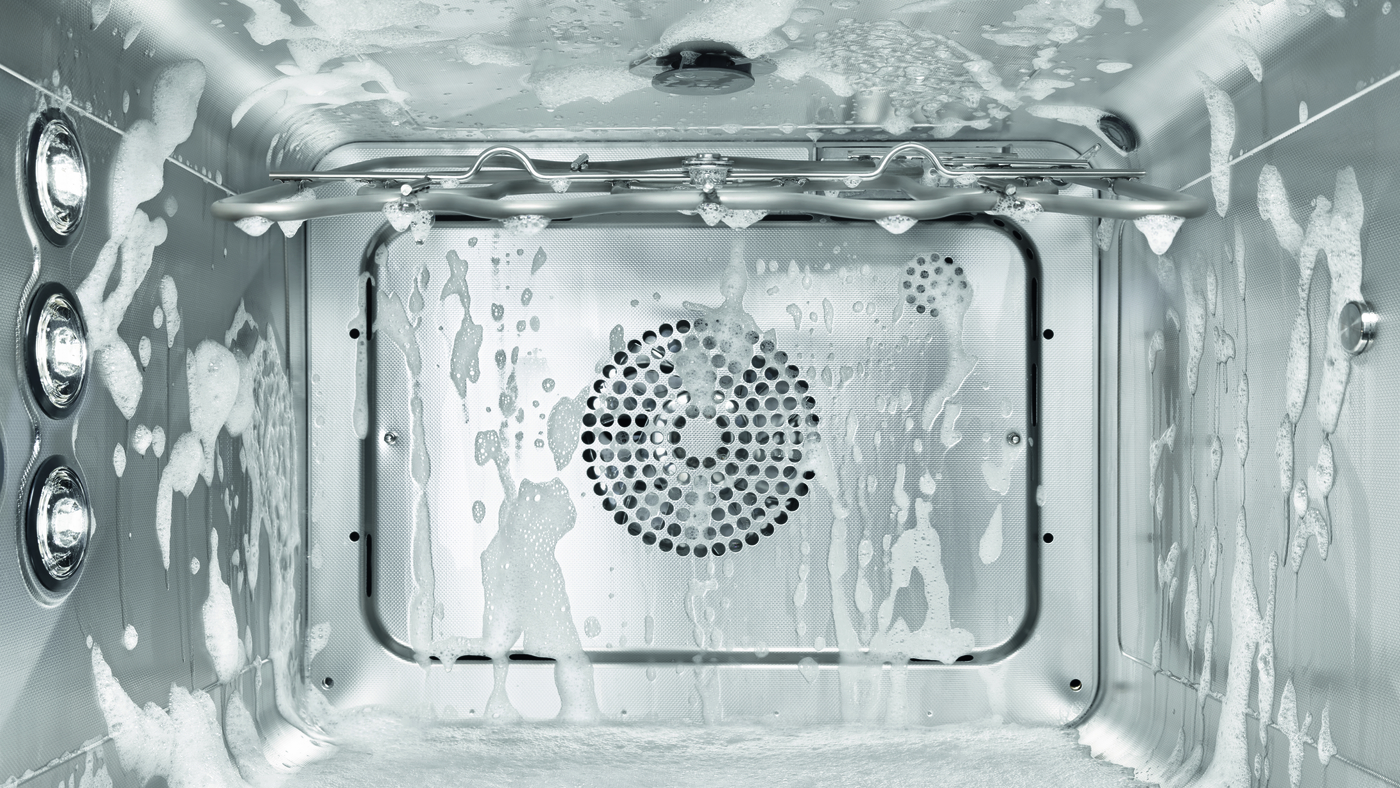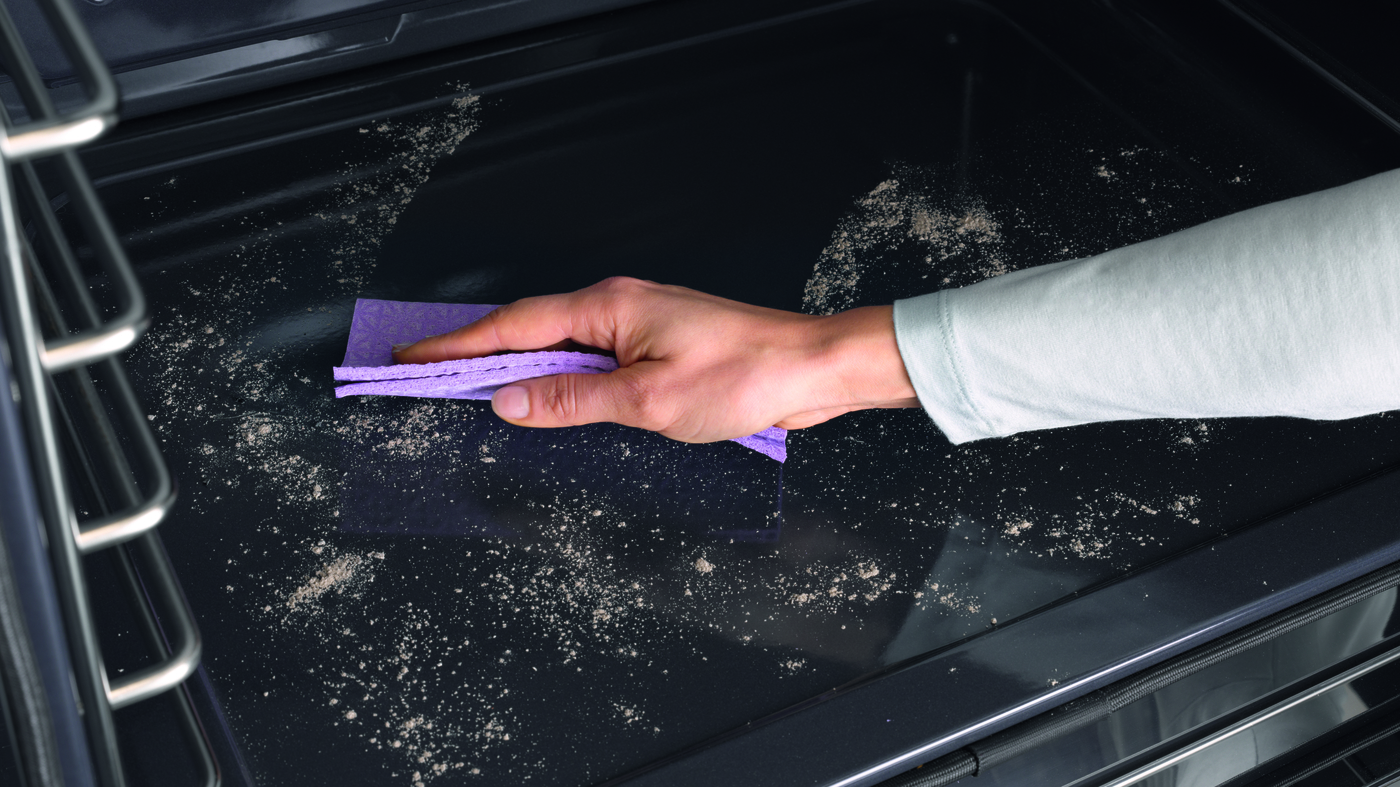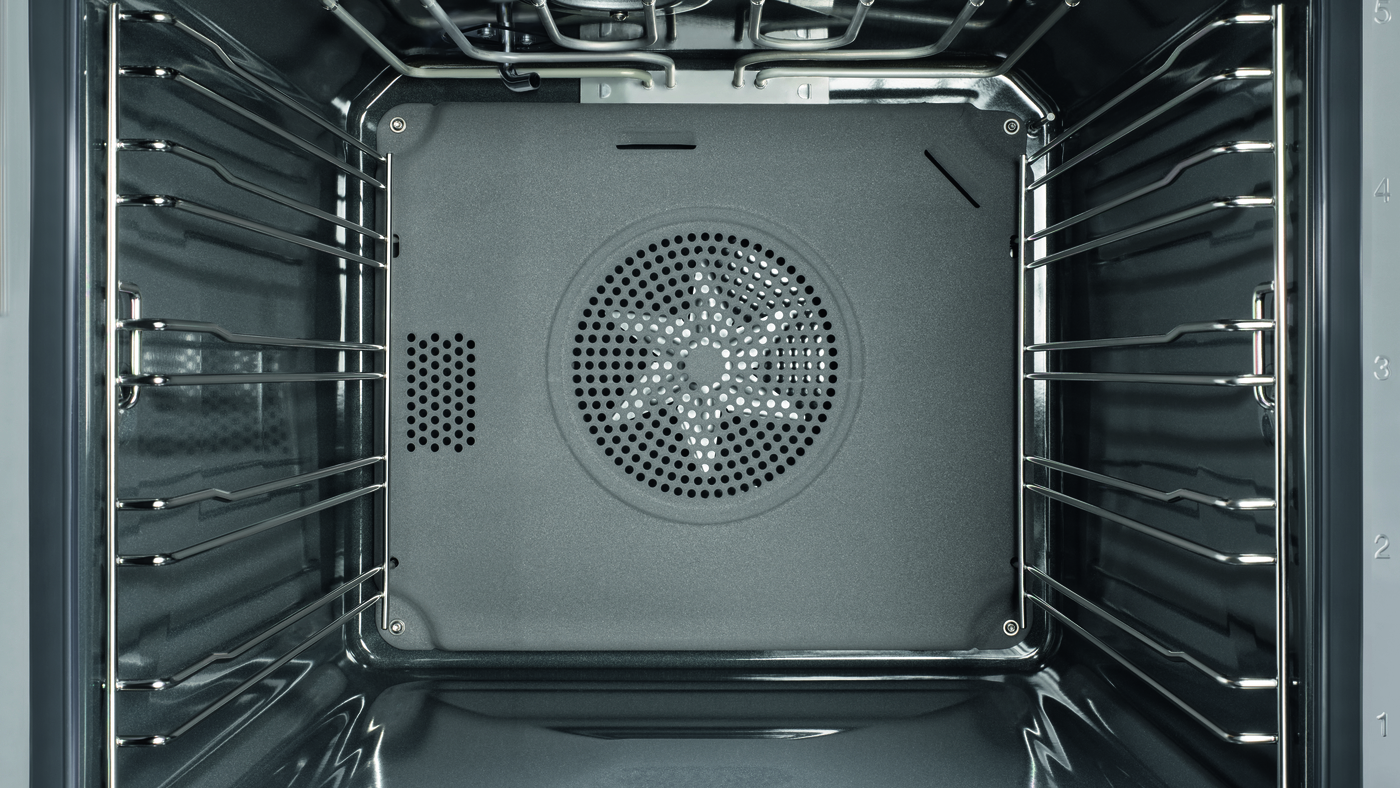Ovens are the workhorse of the kitchen, used for everything from everyday meals to reheating leftovers, cooking snacks and sides, home baking, Sunday roasts and three-course dinners when entertaining. While cooking is enjoyable, cleaning the oven is one of those dreaded tasks that is often put off for another day. Regular cleaning will make this task easier, as it will reduce the amount of fat and grease that builds up over time, as well as reducing the risk of contamination. Our Product Training Manager, Sophie Lane offers expert advice and top tips on how to tackle this task head-on.
How Often Should an Oven be Cleaned?
For ovens, the regularity of cleaning depends on the level of use and what you’re cooking. If you do a lot of roasting or cooking fatty foods, you may need to clean more regularly. Spilled sauces and melted cheese for instance should be wiped out after every use, once the oven has cooled sufficiently to be safe but is still slightly warm to make cleaning easier.
For the average household, a Pyrolytic programme once a month should be sufficient, whereas if cleaning by hand you should wipe after every use and do a full clean ideally once a week to avoid a build-up of grease and staining that will become more difficult to remove with subsequent use of the oven.

How to Clean Oven Racks
It’s important not to wait too long to clean oven racks, as repeated baking on of grease and food residue makes it harder to remove over time, so wipe up spillages as soon as the appliance has cooled sufficiently so you can safely do so.

How to Clean the Oven Door
For the oven door, try to do little and often, as the longer you leave it, the more that food residue becomes baked on and harder to remove. Many ovens allow the oven door to be removed for easier cleaning. Check your operating manual to see if this is the case for your oven.
Once you have removed the door, place it on a soft surface such as a tea towel to prevent any scratching. Separate the panes of glass so that you can clean each one. One of the best at-home degreasers is washing-up liquid. Use this with a sponge or cloth to break down the dirt on the door.
If you have a very dirty door, it can be tempting to use harsh chemicals or hard and metal cloths. Be careful though, as scratches on the door glass can cause the glass to break over time. Do not use abrasive cleaners, hard sponges, brushes or sharp metal tools to clean the door glass.
How to Deep Clean the Oven
Baked-on deposits can be removed with a glass scraper or with a non-scratch sponge, hot water and washing-up liquid.

How to Clean the Outside of the Oven
The outside of the oven can be cleaned with a damp cloth, which you can use to rub the surface with circular movements. Any stubborn stains can be dealt with by adding a few drops of washing-up liquid to the cloth. Dry after cleaning and you’re ready to enjoy your sparkling clean oven.
Products to Use for Cleaning the Oven
If you have an oven with a Pyrolytic self-cleaning programme, you can afford to go a bit longer between doing a full clean, as the heat of this programme will remove pretty much anything from the inner cavity without the need for elbow-grease. However, if cleaning by hand you will need to be a bit more diligent.
Miele’s Oven Cleaner is a great product to help you get best results. Its gel-like consistency cuts through grease without nasty odours and it can be used on Miele’s PerfectClean non-stick ovens, too.

Planning Your Kitchen?
Discover the precision and accuracy of Miele with a complimentary 5 course taster menu that brings the appliances to life.



